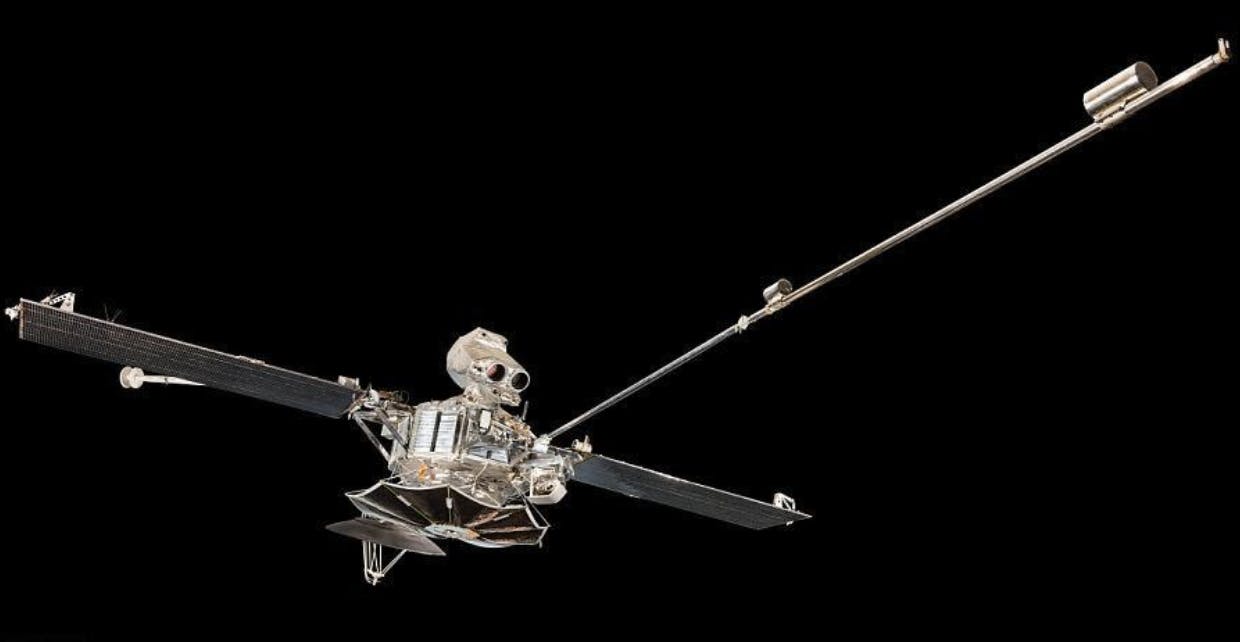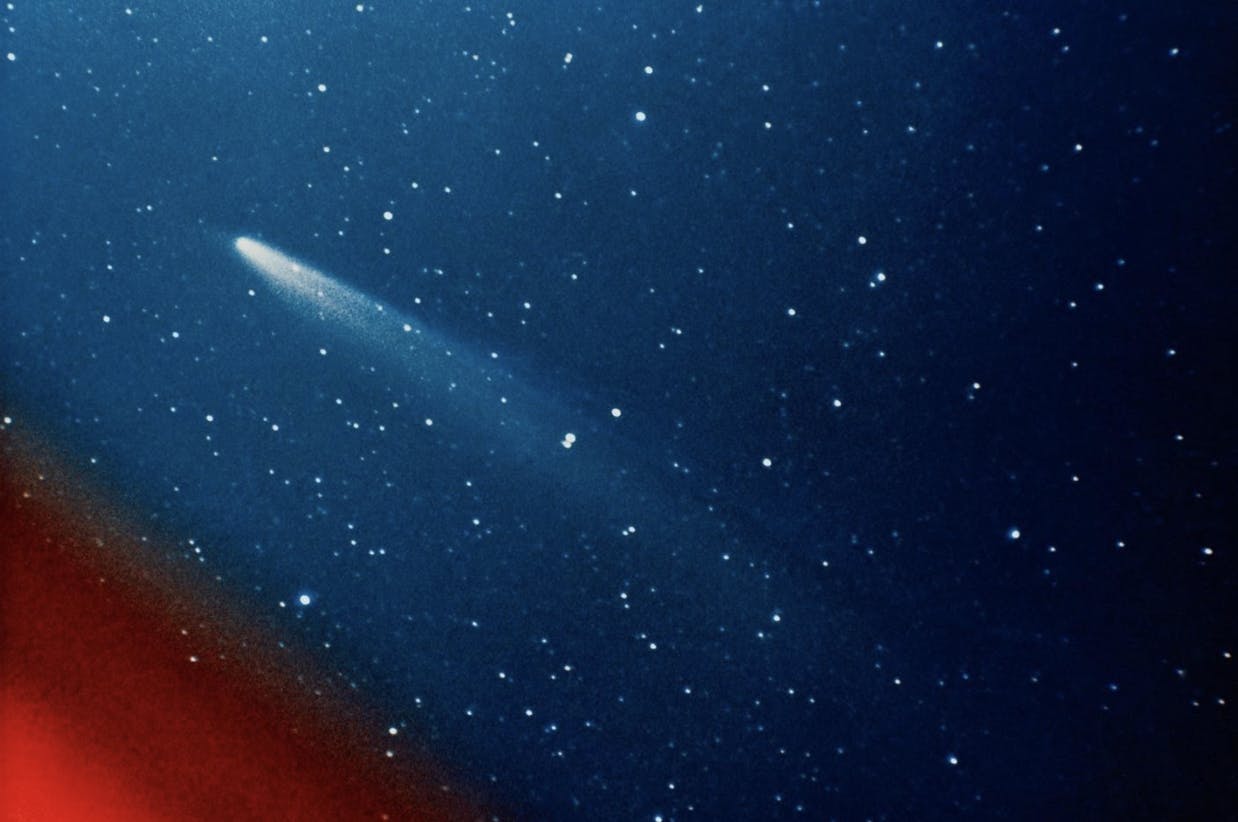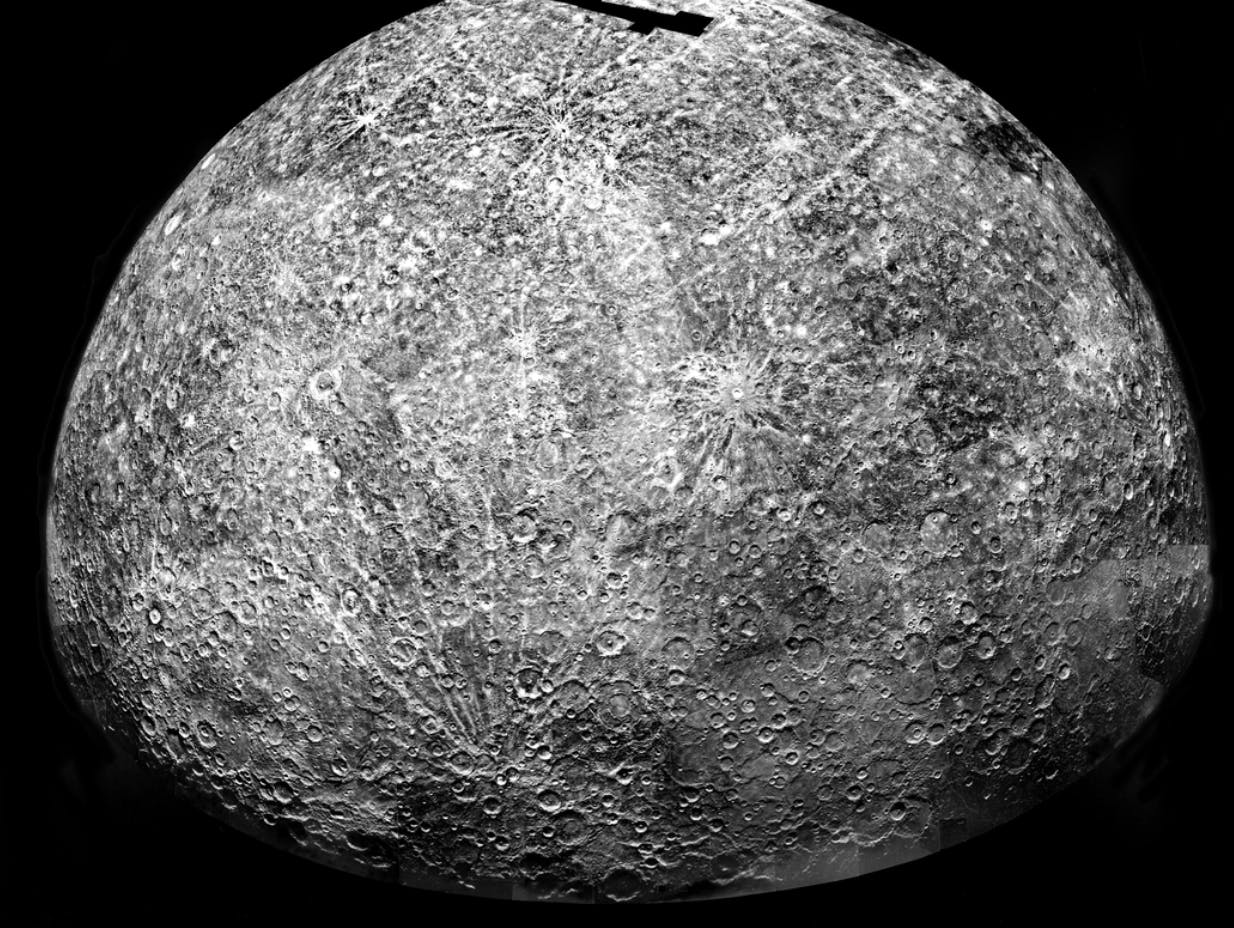Today, 48 Years Ago
By Eduard Shkulipa
November 03, 2021 · 6 minute read
Earth Science
Space Science
Chemistry
Physics
On November 3rd, 1973, from Cape Canaveral, Florida, a rocket was launched with a unique spacecraft – the last launch of the pioneer interplanetary mission – the Mariner 10 probe. From that day, this spacecraft would move into our Solar system to establish new horizons, test new technologies, celebrate human ingenuity, and discover the wonders of our Universe.
What is so special about the Mariner 10 project?

Image Credit: Mariner 10 probe. (Eric Long, November 21, 2017, “Mariner 10”)
The Mariner program started in 1962 as the first interplanetary mission. There were 10 Mariner projects in total and 7 of them were launched successfully. The primary purpose of the Mariner program was to explore other planets of the Solar system. Thus, before Mariner 10, there had already been accomplished flybys of Venus (Mariner 2 and 5) and Mars (Mariner 4,6, and 7, and Mariner 9 had successfully orbited the red planet for 500 days). However, Mariner 10 probe’s primary goal was to accomplish flybys of another planet - Mercury.
The journey begins
After the launch, the Mariner 10 probe has started a three-month journey to its first destination – another planet of our solar system – Venus. During this time, the probe malfunctioned continuously, keeping the controlling crew on Earth on a constant edge. However, the problems were fixed, and the probe successfully continued its mission.

Color photograph of the comet Kohoutek (C/1973 E1), taken by members of the lunar and planetary laboratory photographic team from the University of Arizona, at the Catalina observatory on January 11, 1974. (NASA, January 11, 1974, “Comet Kohoutek (S74-17688)”)
In January, the probe has transmitted information about a Comet Kohoutek – a comet that has been discovered in march 1973, and came as close as 272 miles (438 km) to the Earth in the same year; the comet was so close that it could be seen by the naked eye from the Earth.
By researching the comet, Mariner 10 had achieved its first goal and became the first spacecraft to return data on a long-period comet.
In February, Mariner 10 approached its second object – Venus. Here, the probe has first broadcasted the photo of this planet.

On Feb. 5, 1974, NASA's Mariner 10 mission took this first close-up photo of Venus. (NASA, February 5, 1974, “Mariner 10's First Close-Up Photo of Venus”)
After doing further research and taking more photos, the probe began to direct towards Mercury. However, the way that Mariner redirected itself was used for the first time. The probe used the planet’s gravity to maneuver and set a new trajectory. This approach has been used for the first time with the Mariner 10 probe and was further utilized for following spacecrafts.
Moreover, another technology that was used for the first time in this spacecraft was utilizing solar wind as the primary force of movement. The way it works is very similar to using regular wind to move boats on the water. On the spacecraft was installed a sail made from metal foil, and particles of light – photons – that move from the Sun apply force on the sail. Just like regular wind that moves ships.
Thus, if you move a sail on a spacecraft in a certain way, you can move the spacecraft in different directions. As I mentioned before, this technology was used in the Mariner 10 probe for the first time, and then used in almost all probes in the future.
Back to the journey, now the spacecraft has left Venuses’ orbit and began to approach the next target – Mercury.
The smallest planet
Mercury is the smallest planet in the Solar system and is slightly bigger than the Moon (by the way, Mercury is similar to the Moon by composition, similar grey color of the surface; and surface, also scarred with craters). Mercury is the closest planet to the Sun. In fact, the Sun would appear three times bigger from Mercury’s surface than from the Earth’s.
Additionally, due to being the closest to the Sun, the planet has the greatest speed orbiting around the Sun among planets in the solar system. Surprisingly, Mercury is not the hottest planet in our solar system. The hottest planet is Venus, even though it is much further from the Sun. This happens due to the lack of atmosphere on Mercury. Mercury’s atmosphere is extremely thin and primarily consists of oxygen, sodium, hydrogen, helium, and potassium that are blown from the surface of the planet by the solar wind. Thus, without the atmosphere, energy from the Sun quickly accumulates and as quickly spreads into space. That is how temperature on the surface of this planet could get up to 800°F (430°C) during the day and -290°F (-180°C) during night time.
Another surprising fact about this planet is that Mercury orbits the Sun in a strange, compared to other planets of our solar system, way. The shape of the orbit resembles an egg, which brings the planet as close as 29 million miles (47 million kilometers) and as far as 43 million miles (70 million kilometers) from the Sun. Due to this fact, even though Mercury orbits around its axis in 59 Earth’s days, due to the shape of the orbit, the Sun appears from different parts of the planet and makes a “day” (a cycle of sunrise and sunset) last as long as 176 Earth’s days. Compared to Mercury’s year (rotation around the Sun), which lasts 88 Earth’s days, Mercury’s “day” lasts longer than its “year”.
The Probe
On March 29th, 1974, at a range of 703 kilometers (437 mi), the Mariner 10 spacecraft took the first photo of Mercury, making itself the first spacecraft to approach this planet.

Mercury: Computer Photomosaic of the Southern Hemisphere. (NASA/JPL, January 11, 2001 “Mercury's Southern Hemisphere”)
The probe had made three flybys of the Mercury in total, obtaining and transmitting data on the planet’s surface, making over 2,800 photos of the planet( which allowed it to map 45% of its surface), and revealing Mercury’s Moon-like surface. In addition, the probe researched the planet’s atmosphere and orbit, and the temperatures of the surface. These researches have contributed a greater part of our knowledge of Mercury.
After its third and last flyby, Mariner 10 program officially ended, and on March 24th, 1975, when the maneuvering fuel on the probe had been exhausted, a transmitter on the spacecraft received a command to turn off, and communication with Mariner 10 was stopped.
Supposedly, the probe orbits around the sun till this day, but its electronics have been dramatically damaged by the Sun’s radiation.
The Mariner 10 program discovered the bigger part of what we now know about Mercury. The probe tested and proved the reliability of new techniques like using gravity as a redirection force and utilizing solar wind for acceleration in a vacuum. The spacecraft opened a new perspective on space exploration and established yet a new horizon of humankind, showing that with ingenuity, there are no borders and anything is possible.
Sources:
- “Mariner 10” NASA science: Solar System Exploration, July 24, 2019
- “Mercury” NASA science: Solar System Exploration, October 19, 2021
- “Mariner” Mission and Spacecraft Library JPL, October 20, 2021
- “Mariner 10: First Mission to Mercury” by Elizabeth Howell, Space.com, October 31, 2012
- “Observations of Comet Kohoutek.” SP-404 Skylab's Astronomy and Space Sciences, November 1, 2021
- “Venus” NASA science: Solar System Exploration, August 9, 2021
Additional information:
- “Mariner Program” Wikipedia, October 8, 2021
- “Comet Kohoutek” Wikipedia, October 10, 2021
- “Mercury (planet)” Wikipedia, October 22, 2021
- “Mariner 10” Wikipedia, September 24, 2021
- “What Did Mariner 10 See During Its Historic Journey To Venus and Mercury?” by V101 Science, Youtube.com, December 5, 2019
Did you enjoy this article?
About The Author
Eduard is a freshman at University of California San Diego. He enjoys engineering, math, solving Rubick’s cubes, swimming, and, strangely enough, collecting coins. Send him a question or suggestion at eduard@sciteens.org.